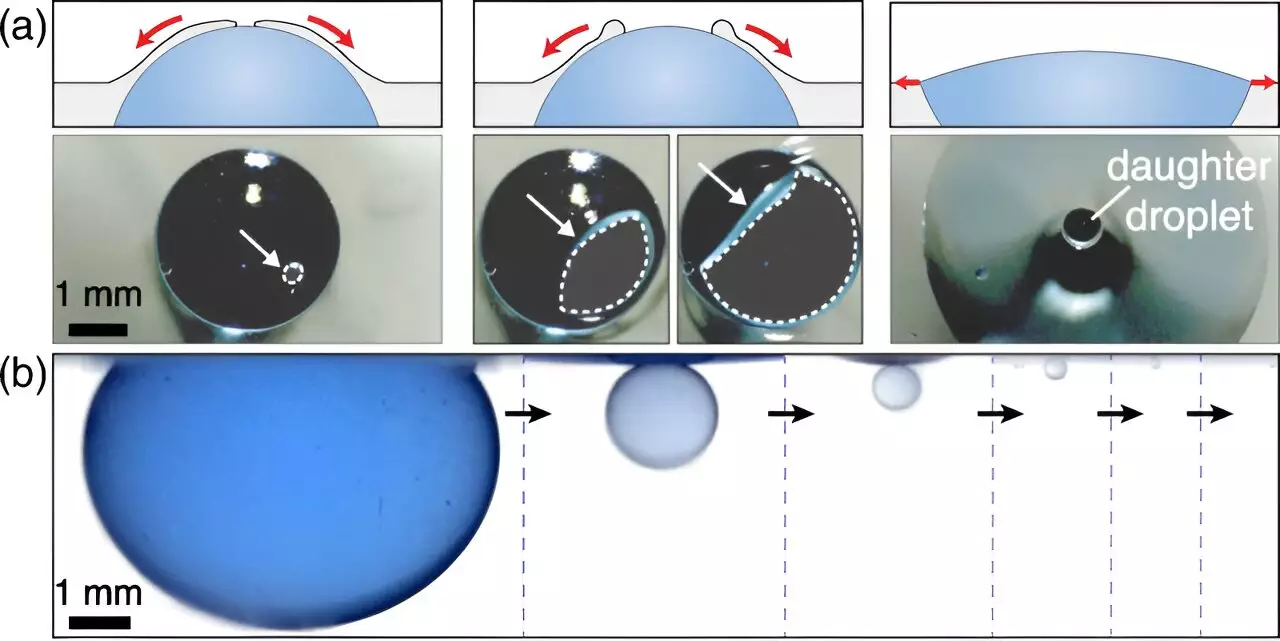Oil spills, both above and below the water’s surface, have devastating effects on the environment. However, recent research has shed light on a new discovery that challenges our understanding of how oil behaves when it reaches the surface after an underwater spill. This study, conducted by the University of Illinois Chicago, reveals that oil drops from underwater spills do not simply turn into a flat film as previously believed, but rather break into smaller droplets that remain suspended in the water.
The research team led by Sushant Anand found that when oil drops reach the water’s surface, they do not immediately form a slick. Instead, these drops remain partially submerged for a period of time. As the thin film of water covering the exposed part of the drop breaks, that part spreads across the water surface, forming a film. However, the part of the drop that was below the surface deforms, breaking off into smaller “daughter” drops. This process of breaking off into smaller droplets continues, making it difficult to clean up the oil.
Environmental Implications
The discovery of this new pathway by which oil can spread pollution inside the ocean has significant environmental implications. Traditional cleanup efforts have focused primarily on the oil slick that forms above the water’s surface, overlooking the oil droplets that remain suspended underwater. Understanding the mechanics of oil dispersion is crucial for developing more effective cleanup strategies, especially in the case of underwater oil spills.
Challenges in Cleanup Efforts
One of the challenges highlighted by the research is that smaller oil droplets are much harder to clean up. The study suggests that increasing the viscosity of the water can help keep the oil drops intact, making it easier to remove them from the water. The use of biodegradable, water-soluble compounds to increase water viscosity and prevent the formation of daughter drops could be a potential solution to improve cleanup efforts after oil spills.
The findings of this study have broader implications beyond underwater oil spills. Pipelines running under lakes and rivers, as well as oil spills from ships, can also lead to the formation of smaller oil droplets that remain suspended in the water. It is essential for oil companies to incorporate this new information into their spill prediction models to better understand the size and spread of spills.
The research conducted by the University of Illinois Chicago highlights the complex nature of oil dispersion in the water following underwater spills. By uncovering the mechanisms by which oil drops break into smaller droplets, the study emphasizes the importance of developing enhanced cleanup strategies to address the long-lasting environmental impact of oil pollution in our oceans and waterways. Further research is needed to explore the implications of these tiny oil droplets on underwater species and ecosystems.


Leave a Reply